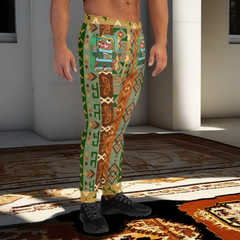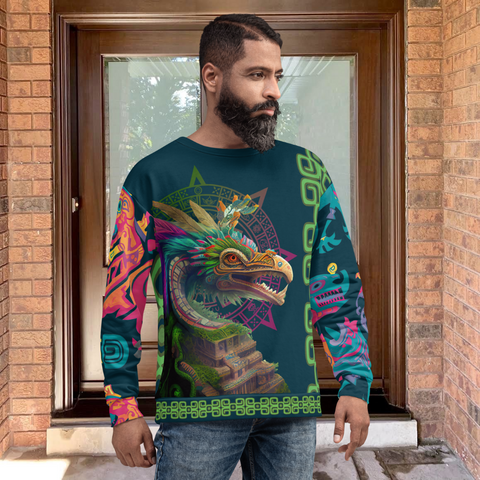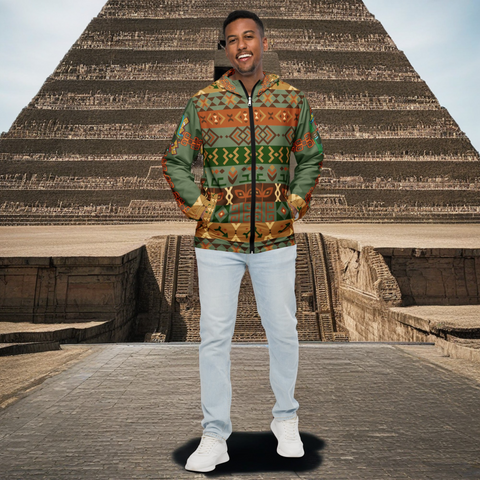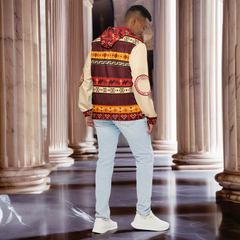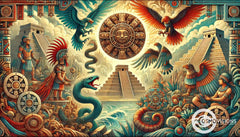Exploring the Mysteries of Aztec Cosmology and Religion within Ancient Civilization
Posted by Massimiliano Geraci
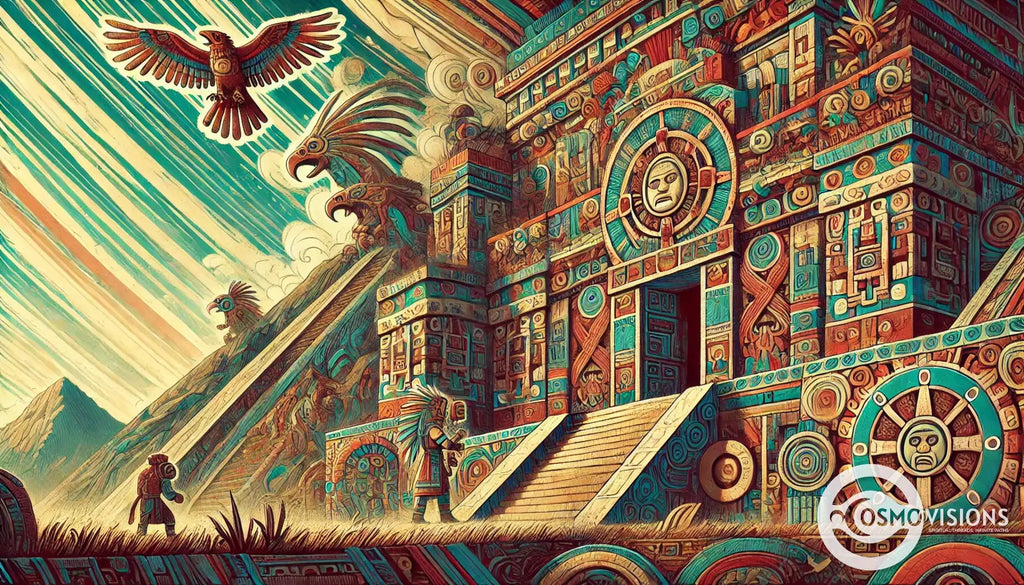
Have you ever wondered about the ancient Aztecs and their view of the world? The Aztec Empire, known for its historical and cultural significance, emerged as the dominant force in central Mexico with intricate social, political, religious, and commercial organization. Many people find it hard to understand. But, there’s a lot to learn from how they saw the universe and their place in it.
One interesting fact is that the Aztecs had over 200 gods and each one had a special job or role. They believed these gods controlled everything from the weather to war.
Our blog post will help break down these complex ideas into easy pieces. We’ll talk about their creation myths, important rituals, and why human sacrifice was so vital to them. This way, you can start to see the world through Aztec eyes.
Stay curious!
Key Takeaways
Aztec Creation Myths
The Aztecs had powerful stories about how the world began. They spoke of Five Suns, each representing a different era and way the world was destroyed and reborn. These myths say that gods created humans and the universe out of self-sacrifice. These myths were passed down through the Aztec language, Nahuatl.
Two main gods, Ometeotl and Tonacatecuhtli, played big roles as creators. Their belief was not simple; it showed deep connections between life, death, and rebirth.
The story goes something like this: First came the Sun of Earth, then Wind, followed by Rain of Fire, Water, and finally our current sun known as Nahui-Ollin or “Sun of Movement”. Each phase ended in catastrophe but led to creation anew with lessons for humanity on resilience and renewal. To understand ourselves today, scholars often say about these myths in fancy books called codices like Codex Florentine, we look back at how ancient peoples understood beginnings.

Aztec Gods: Deity Pantheon and Their Roles
Aztec gods played big roles in daily life. Within the pantheon of lesser gods, Huitzilopochtli, the guardian of the Mexica, led his people to Tenochtitlan. This city became their powerhouse. He symbolized war and the sun, driving away darkness every dawn.
Tlaloc brought rain, filling lakes and making crops grow. Without him, famine would strike hard.
Quetzalcoatl shaped arts and culture across Mesoamerica. Known as the feathered serpent, he stood for learning and priests often dressed like him in rituals. Chalchiuhtlicue watched over waters, ensuring rivers stayed full and clean for all users.
Together with Metztli (the moon) and Tlaltecuhtli (earth), they balanced nature’s forces harmoniously to support Aztec civilization’s sustenance and growth.
The Cosmic Structure: Heavens and Underworlds
The Aztec religious cosmology described a universe that was vast, split into thirteen skies and nine land levels or underworlds. Each layer had its own gods and symbols, showing their deep connection to the cosmos. Souls would journey to different places after death - the sun, a dark realm called Mictlan, or Tlalocan, a place of rest for those who died in water-related ways.
Mountains and caves were special to the Aztecs. They saw them as doors between worlds where humans could touch the divine or spirits could enter our world. This connection made these spots powerful places for prayers and offerings, helping people feel closer to the mysteries above and below them.

Importance of Human Sacrifice
Human sacrifices kept the world going. Aztecs thought this act was vital for the sun to rise and crops to grow. They often chose warriors and slaves to represent gods during these rituals. These sacrifices took place on a sacrificial stone, a significant element in the religious ceremonies.
This honor meant they took on the role of deities like Tezcatlipoca or victims for rain god Tlaloc’s ceremony, where children were chosen.
In one grand event at the Great Pyramid in 1487, between 10,000 and 80,400 people offered their lives over four days. These actions showed deep faith in their cosmology and commitment to pleasing their gods, ensuring the survival of their society and natural cycles like daybreak and harvest seasons.
The Aztec Calendar and Rituals
The Aztec calendar and Aztec rituals formed the backbone of their cosmology. This complex system guided daily life, agriculture, and religious practices.
1. The 365 - day calendar, known as xiuhpohualli, tracked time with precision. It was divided into 18 months of 20 days each, with five unlucky days added at the end.
2. Every 52 years marked a significant milestone—xiuhmolpilli or the New Fire ceremony. This event symbolized the renewal of time and the cosmos.
3. Festivals called Veintena centered around agricultural cycles and gods. They ensured harmony between humans and divine forces through various rituals.
4. TOXCATL festival ran from May 5 to May 22. It featured dances, offerings, and child sacrifices to Tlaloc, the rain deity.
5. ATEMOZTLI fell between December 11 and December 30. Celebrations included water feasts and sacrifices of maize dough figures to honor Tlaloc.
These ceremonies underscored the Aztecs’ deep connection with celestial movements and their quest for balance in the cosmos.
Supplementary insights on Aztec Cosmology and Aztec Religion
In exploring deeper into Aztec cosmology and religion, we find stories about stars, planets, and the role of humans in rituals that blend with myths. Delve into these mysteries to learn more.
The importance of Aztec tradition is evident in their cultural practices and rituals, which included sacrificial ceremonies and the use of stone artifacts and monoliths.
Role of Celestial Bodies in Aztec Beliefs
The Aztecs saw the sky as a grand canvas painted with gods and stories. Stars were not just lights but deities named Centzon Huitznahua, glistening in the night. The sun rose each day because of Tonatiuh, who demanded strength through human hearts to fight darkness.
Human beings had a limited role in the overall scheme of things, as their destiny was controlled by the all-powerful tonalpohualli. The Aztec belief system emphasized the duty of human beings to fight and die for the gods and the world order, with a focus on sacrifice and a worldview dominated by witchcraft, omens, and portents.
Morning brought Tlahuizcalpantecuhtli, or Venus, reminding people of light’s victory over night.
This society looked up and found guidance from celestial actors. Huitzilopchtli, the sun god, was their champion in an endless cosmic war. Each morning’s light was proof of his triumph.
People knew their place in this vast universe through these tales written in starlight and sunlight above them.
Deity Impersonation in Rituals
Priests and chosen people dressed as gods, or teixiptla, in Aztec rituals. This act brought the divine into the everyday world. Young men impersonating Tezcatlipoca were honored for a year before their sacrifice.
This showed deep respect and fear of the god’s power.
Warriors captured in battles became part of Xipe Totec‘s worship. They died, then others wore their skins. This shocking practice connected life, death, and rebirth in Aztec thought and culture.
It reminded everyone that survival required serious sacrifices.

The Legend of Quetzalcoatl
Quetzalcoatl stood out among gods in the Mexica beliefs. He was a deity of many talents, wisdom, and wind. The Mexicas looked up to other cultures like the Toltecs. From them, they learned about Quetzalcoatl and made him part of their own rich tapestry of deities. Sometimes, they linked him with gods they already worshiped. Comparisons are often made between Aztec beliefs and other Mesoamerican religions, highlighting similarities and shared aspects.
This great feathered serpent wasn’t just any god; he was a creator who shaped the world and its people. His story ties back to ancient teachings across Mesoamerica, reaching even those who spoke Nahuatl long before the Mexica Empire rose.
By adopting Quetzalcoatl into their divine circle, the Aztecs embraced a legacy that wove through the fabric of time itself—binding past wisdom with their present beliefs.
Influence of Aztec Cosmology on Society
Mesoamerican religions, including Aztec cosmology, shaped their world in deep ways. The Tlatoani and high priests held power, guiding the people through rituals and sacrifices. This was to keep both the political and cosmic systems in balance.
Every level of society had its own set of rituals and gods to honor, even women played crucial roles. Every aspect of life is a mirror reflection of the gods’ will. Stars and planets, such as Venus, were not just lights in the sky but messengers of fate. People looked to them for guidance on when to plant crops or go to war. Festivals filled the calendar, each celebrating a different god or goddess with dances, music, and offerings.
These ceremonies connected everyone back to their beliefs about creation and destiny.
Legacy and Modern Interpretations
Today, the Mexica Sun Stone sits proudly in Mexico City’s National Museum, located on the site of the legendary vision where the Mexicas built their capital city of Tenochtitlan. This 12-foot-wide disc tells a rich story of time and belief for Nahuatl speakers. People from all over the world come to see it, showing how ancient Aztec cosmology still sparks curiosity.
The stone connects us to the past, making old myths feel alive today.
Nahua descendants honor their roots by keeping traditions alive. They celebrate deities like Tlaloc and Quetzalcoatl in modern Mesoamerican cultures. Through rituals and festivals, they bridge centuries, linking today’s celebrations with ancient wisdoms.
This blend of past and present shows the enduring spirit of Aztec teachings in contemporary life.
FAQs
1. What did the Aztecs believe about how the world started?
The Aztecs thought that their world was born from a place of duality, where gods of life and death ruled together. They believed in a story... A tale that says our earth came to be under the watchful eyes of lesser deities, following the creation and destruction of four previous worlds.
2. Who were some important gods for the Aztecs?
In their rich tapestry of belief, two figures stood tall: Huitzilopochtli, the god of providence and war; and Tezcatlipoca, known as the god of visions. These beings held great power... guiding people through life's trials with a firm hand.
3. How did ancient Mexico honor these deities?
Through grand ceremonies at places like Templo Mayor—right in heartland—the Aztec capital became alive with devotion. Human sacrifice was practiced… not out of cruelty but profound respect and desire to ensure continued existence by feeding divine forces.
The Spanish Conquest had a significant impact on Aztec religious practices, including forced conversion to Catholicism and efforts to abolish traditional rituals.
4. Can you tell me about the concept of Thirteen Heavens in Aztec cosmology?
Above us, according to legend, stretch thirteen heavens—a ladder reaching towards an ultimate realm beyond mortal grasp. Each level housed different celestial entities; this structure mirrored society's hierarchy on Earth's surface.
5. What role did myths play in Aztec society?
Myths weren’t just old tales; they were lessons woven into everyday life—tales that connected them to ancient civilizations like Teotihuacan or even mythical ones like Toltecs…. They guided principles, explaining everything from why warriors would transform into hummingbirds upon death to why an eagle holding a heart symbolized strength and unity.
For a deeper understanding of these cultural narratives, one can refer to 'Aztec Thought and Culture: A Study of the Ancient Nahuatl Mind' by Miguel León Portilla, published by University of Oklahoma Press.
6. How do we see Aztec beliefs influencing today’s culture?
Even now… symbols like nopal cactus or left-handed hummingbird flutter through modern Mexico’s veins—reminders of a profound legacy etched deep within cultural memory banks… Their stories continue shaping identities; traditions once rooted in ancient soils bloom anew amongst descendants who walk paths paved with reverence for those who came before. Works such as 'Rain Of Darts: The Mexica Aztecs' and 'Calendrical Systems Of Central Mexico' published by University of Texas Press provide further insights into this enduring influence.






